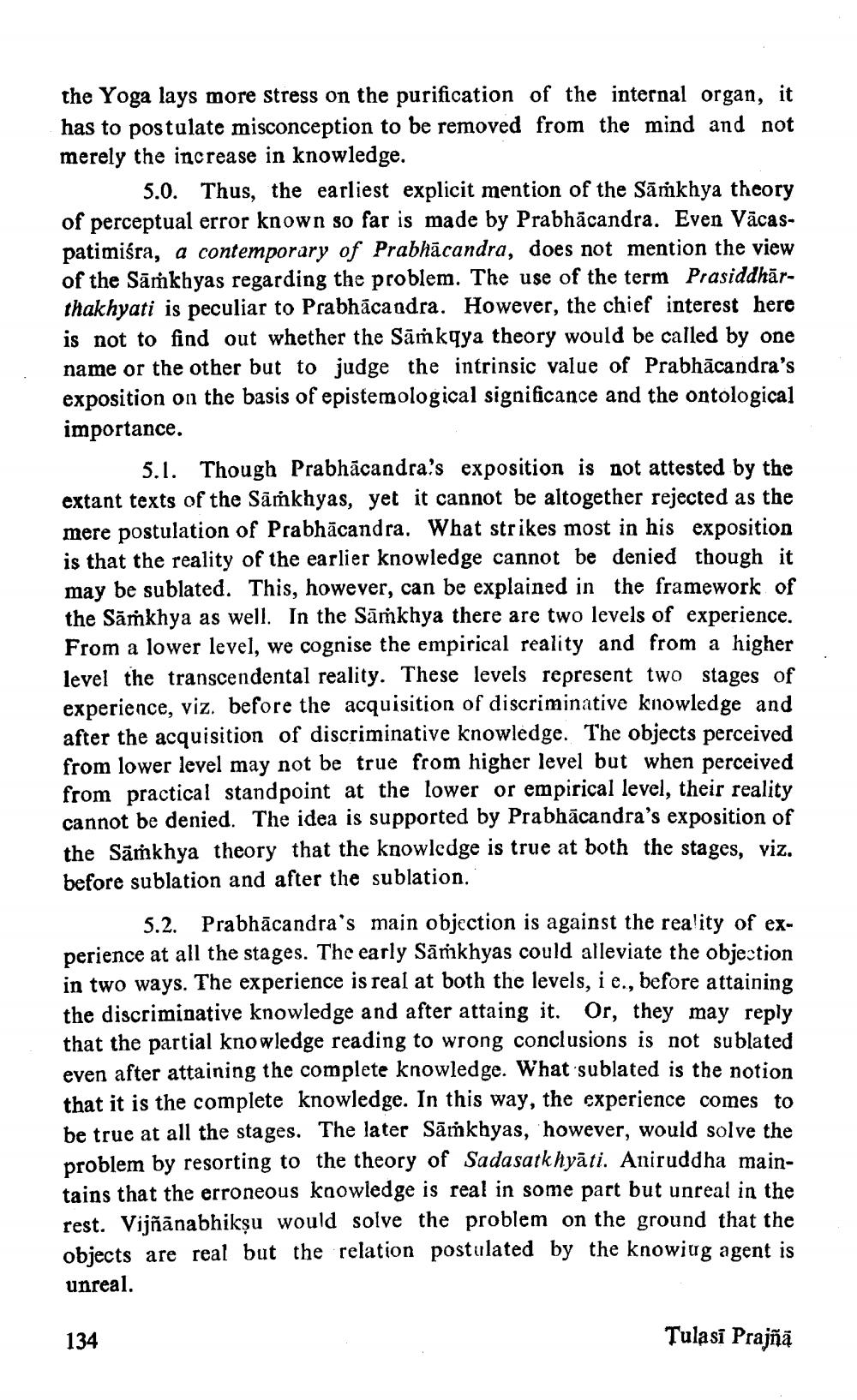________________
the Yoga lays more stress on the purification of the internal organ, it has to postulate misconception to be removed from the mind and not merely the increase in knowledge.
5.0. Thus, the earliest explicit mention of the Sāṁkhya theory of perceptual error known so far is made by Prabhācandra. Even Vācaspatimiśra, a contemporary of Prabhācandra, does not mention the view of the Sāṁkhyas regarding the problem. The use of the term Prasiddhārthakhyati is peculiar to Prabhācandra. However, the chief interest here is not to find out whether the Sāṁkqya theory would be called by one name or the other but to judge the intrinsic value of Prabhācandra's exposition on the basis of epistemological significance and the ontological importance.
5.1. Though Prabhācandra's exposition is not attested by the extant texts of the Sāṁkhyas, yet it cannot be altogether rejected as the mere postulation of Prabhācandra. What strikes most in his exposition is that the reality of the earlier knowledge cannot be denied though it may be sublated. This, however, can be explained in the framework of the Sāṁkhya as well. In the Sāmkhya there are two levels of experience. From a lower level, we cognise the empirical reality and from a higher level the transcendental reality. These levels represent two stages of experience, viz. before the acquisition of discriminative knowledge and after the acquisition of discriminative knowledge. The objects perceived from lower level may not be true from higher level but when perceived from practical standpoint at the lower or empirical level, their reality cannot be denied. The idea is supported by Prabhācandra's exposition of the Sāṁkhya theory that the knowledge is true at both the stages, viz. before sublation and after the sublation.
5.2. Prabhācandra's main objection is against the reality of experience at all the stages. The early Sāṁkhyas could alleviate the objection in two ways. The experience is real at both the levels, i e., before attaining the discriminative knowledge and after attaing it. Or, they may reply that the partial knowledge reading to wrong conclusions is not sublated even after attaining the complete knowledge. What'sublated is the notion that it is the complete knowledge. In this way, the experience comes to be true at all the stages. The later Sāṁkhyas, however, would solve the problem by resorting to the theory of Sadasarkhyāti. Aniruddha maintains that the erroneous knowledge is real in some part but unreal in the rest. Vijñānabhikṣu would solve the problem on the ground that the objects are real but the relation postulated by the knowiug agent is unreal.
134
Tulasĩ Prajĩa




